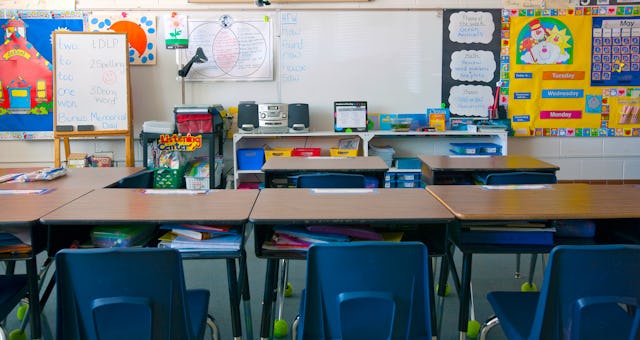Survey Shows A Quarter Of Kids Missed More Than A Week Of School In January

Though most districts didn’t officially close, the impact of staffing shortages and COVID exposures led to a staggering number of missed school days for students last month
New data on school disruptions due to the omicron variant in 2022 is staggering, according to The New York Times.
With data firm Dynata, NYT‘s The Upshot conducted an online survey of 148,000 parents, asking how many days their kids were home from school in January. They found that 25% of students missed six or more in-person learning days last month, with 8% missing a whopping 12 or more days. The repercussions of so many absences will continue to reverberate through many homes and communities, and may include learning loss (especially for low income and special needs kids), parental loss of income and increased teacher burnout, the report said.
While the teacher’s union and the mayor’s office clashed over the issue in Chicago, in many other places, individual classes and groups of students quietly missed multiple days due to COVID-19 exposures. The cumulative impact of this disruption was therefore difficult to measure. The Times/Dynata data gives a more detailed picture of how significant this loss really was.
(FatCamera / Getty Images)
The pandemic marked a turning point in the way educational services are delivered to children. Whereas prior to COVID, regular, in-person days — you know, what we used to just call school days — were occasionally replaced in winter months by a snow day that pressed the pause button on everything for 24 hours. A snow day meant no homework, hours of sledding and snowballs, hot chocolate, time spent watching movies and the understanding among adults that this would be a temporary, infrequent solution to a specific problem that we only had to worry about for one season per year.
COVID has changed all that. In addition to school days and snow days, there is now an unsustainable third option — remote learning — at the reach of schools and districts confronting staffing or other crises. Online learning gives kids all the disadvantages of school (having to do work) and parents all the disadvantages of a school cancellation (no childcare). It’s almost universally hated, but it seems we’re not rid of it yet.
Last month, most students missed a lot more school than they ever have for snow, creating a new level of purgatory for parents. And while this new data gives us a better idea of how bad things got during the omicron surge, it really only scratches the surface of the damage done. Even when kids were in school in January, their teachers were often missing, as were a significant number of their classmates. This means that teachers who weren’t sick had to spend their prep and lunch periods covering classes for absent colleagues, adding to their burden at a time of record teacher burnout. And student absences meant that many teachers had to hold off on introducing new material. Anecdotal reports painted a picture that was a far cry from school-as-usual.
Whether it was an improvement over remote learning depended on the circumstances of each individual family, and we’ll surely be measuring the impact on kids’ education and well-being for years to come.